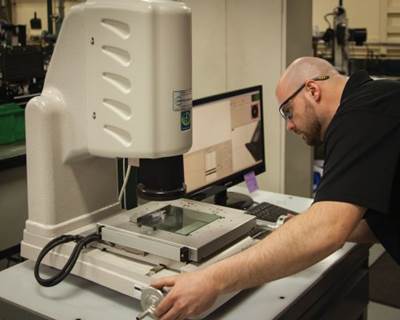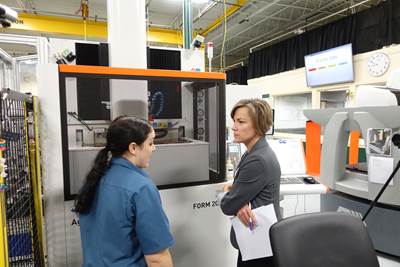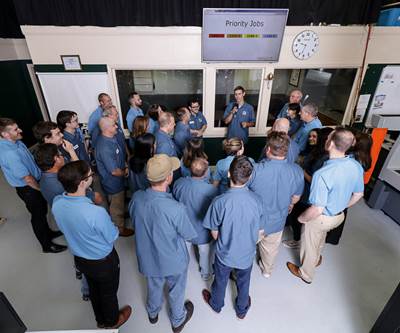Westminster Tool Invests 10% of Revenue into New Machining Equipment
Westminster Tool’s investment in its hard machining department addresses growing production demands and opens doors for internal training opportunities.
Share
Read Next

This is the shop floor of Westminster Tool after its technology investment. Photo Credit: Westminster Tool
This is a shop we’ve covered a lot over the years—after winning MoldMaking Technology’s Leadtime Leader Award in 2014. Once again they are making moves to continue their growth trend, so I had to share this news when it hit my inbox.
Amidst the hardships and ambiguity of 2020, Westminster Tool’s injection mold department has consistently grown faster than ever before in response to the increased demands in medical device manufacturing. For Westminster Tool, that meant investing over 10% of revenue in updating, replacing, and expanding equipment across the shop to improve efficiencies and keep up with the demand.
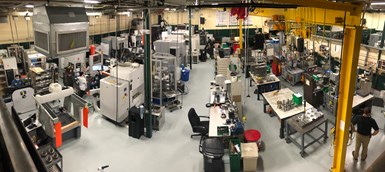
Westminster Tool shop floor before recent investment in equipment.
Photo Credit: Westminster Tool
The area that saw the largest enhancement was the hard machining department. An area with a single Mikron HSM500 is now comprised of three high-speed 3-axis machines and one high-speed five-axis machine, increasing the shop’s milling capacity by over 400%. “The goal was originally to increase throughput by reducing our overall lead time,” says Ray Coombs, President of Westminster Tool, “but the benefits have already begun to make an impact in other ways.”
By adding more machining capabilities—including faster milling times and more advanced automation—Westminster Tool can bring in more work entirely, a significant result from the equipment’s improved efficiencies. “The five-axis capabilities, for example, open us to more intricate types of jobs because we can now hit complex geometries and angles difficult to achieve before,” Coombs says. “And this will have major long-lasting benefits for how we do business,” he adds.
The automation alone currently provides a promising impact on unattended time for all the new machines. The adoption of automated pallet handling not only promises to reduce setup time but makes lights-out operation possible for the company. Once up and running, the new Mikron HSM_400U LP’s pallet pool attachment will make it even easier for the machine to run almost entirely unattended.
With new equipment comes a larger equipment footprint, so the company embarked on a complete reconfiguration of the shop floor over the holidays. “We spent weeks planning and re-imagining what operations will look like here with the new equipment,” says Vice President, Hillary Thomas. “Shutting down the shop for a few days allowed us to move equipment and fully optimize the shop’s workflow.”
The big move placed all milling equipment in a single, centralized cell. It also included moving the electrode milling machines closer to the new 5-axis machine with hopes of combining the two departments by mid-year.
Aside from doubling their machining capacity, one of the company’s most valuable experiences with the new equipment has been with its workforce. By freeing up more machines in the milling department experienced machinists have more time to train and cross-train other Westminster Tool employees. “Cross-training is a critical part of our culture here, but sometimes production requirements made it really hard to use the machines for that training,” says Thomas.
Previously the company had enough work to keep the single mill running 24/7, leaving few opportunities for training. The new machine has already allowed hard mill apprentice, Amy Skrzypczak, to double her training progress in just three weeks, a milestone that would have taken double the time.
These investments are just the beginning of Westminster Tool’s plans for increasing automation and robotics throughout the company. In addition to COVID-related demand, the medical industry continues to progress year after year. And as the demand for high-precision medical molds grows, Westminster Tool plans to continue rising to the challenge and growing its market share.
Related Content
Moldmakers Deserve a Total Production Solution
Stability, spindle speed and software are essential consideration for your moldmaking machine tool.
Read MoreThe In's and Out's of Ballbar Calibration
This machine tool diagnostic device allows the detection of errors noticeable only while machine tools are in motion.
Read MoreThe Trifecta of Competitive Toolmaking
Process, technology and people form the foundations of the business philosophy in place at Eifel Mold & Engineering.
Read MorePrecision Meets Innovation at IMTS 2024
After attending IMTS, it's clear that the integration of advanced technologies is ready to enhance precision, efficiency and automation in mold manufacturing processes. It’s a massive event, so here’s a glimpse of what the MMT team experienced firsthand.
Read MoreRead Next
2014 Leadtime Leader Awards Winner: Westminster Tool Inc.—Bridging the Gap without Losing Focus
A strong sense of self and a focus on people enabled this mold manufacturer to rapidly expand pre- and post-manufacturing services without getting overwhelmed by its own growth.
Read MoreThe Impact of Emotional Intelligence, Personality Profiles and Learning Styles on Training and Productivity
A mold shop changes its hiring approach from one of filling positions to instead finding the right people to grow with the team.
Read MoreTraining Redefined: A Three-Pronged Approach to Solving the Skilled Labor Shortage
A mold builder uses a solid onboarding program, personality profiles and learning styles to quickly and effectively grow its own skilled workforce.
Read More

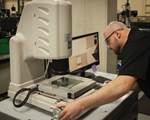
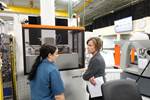
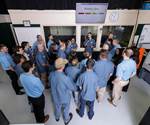








.jpg;maxWidth=300;quality=90)






